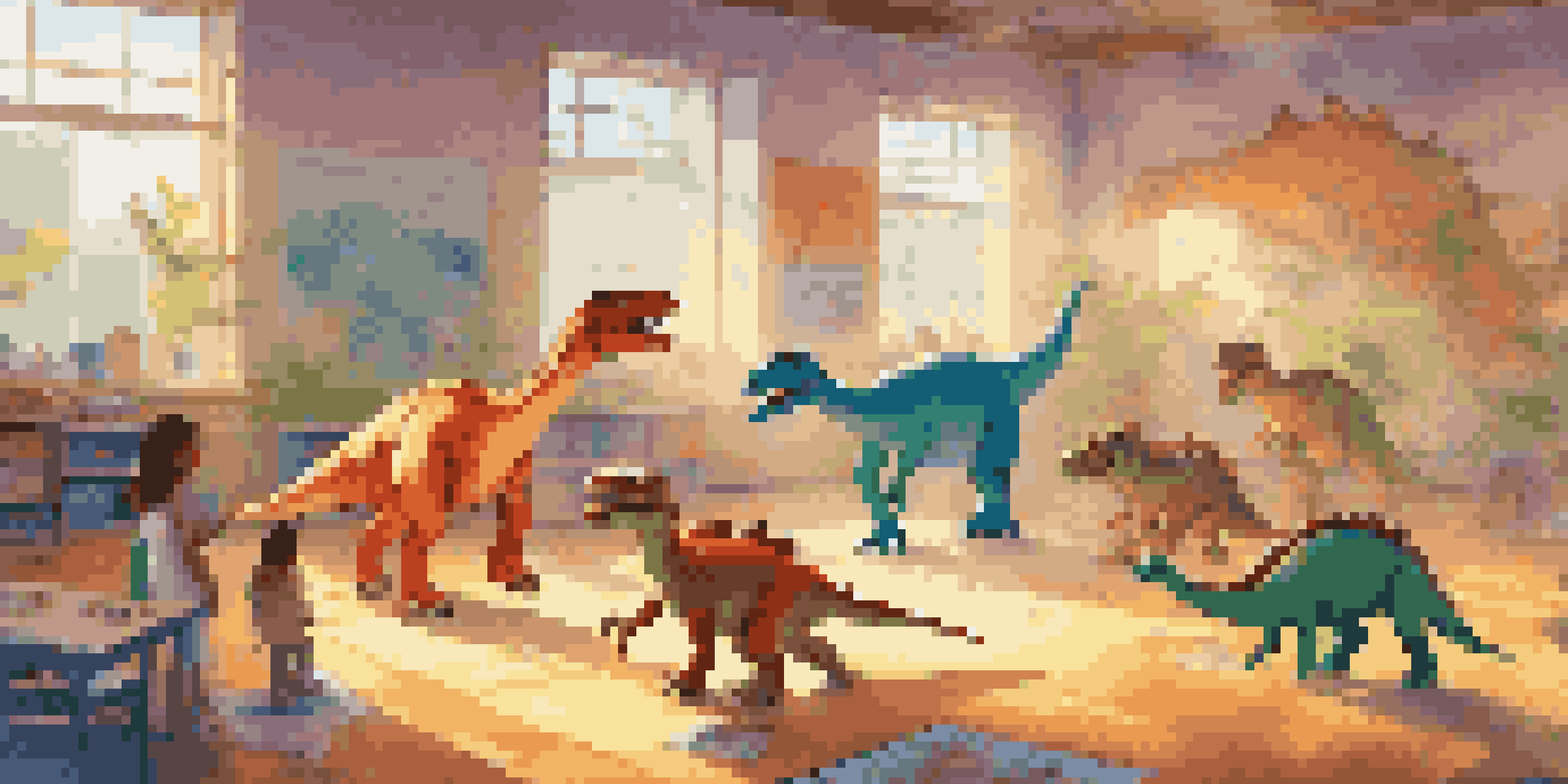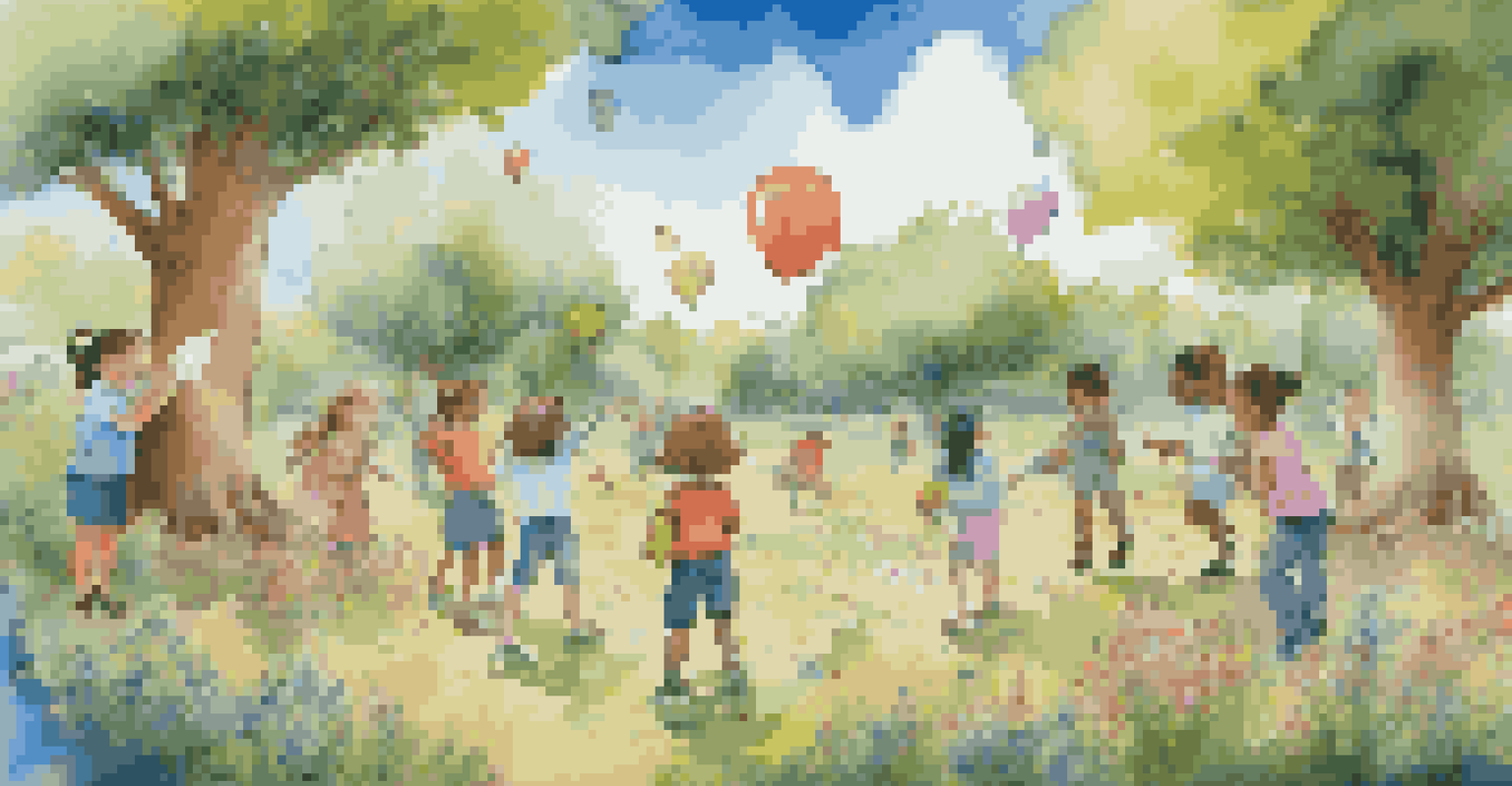Augmented Reality for Kids: Learning Through Play

What is Augmented Reality and Why Kids Love It
Augmented Reality (AR) blends the real world with digital elements, creating interactive experiences. For kids, this technology is not just fascinating; it transforms ordinary learning into exciting adventures. Imagine seeing dinosaurs roam your living room or exploring the solar system right in your backyard—this is the magic of AR.
Technology is best when it brings people together.
Kids are naturally curious and love to explore, making AR an ideal tool for education. It captivates their attention and encourages them to engage with subjects like science, history, and art in a playful way. When learning feels like a game, kids are more likely to absorb information and retain it.
Moreover, AR can cater to various learning styles, whether visual, auditory, or kinesthetic. This adaptability helps ensure that every child can benefit from the interactive experiences, leading to a more inclusive educational environment.
Enhancing STEM Education with AR
STEM (Science, Technology, Engineering, and Mathematics) subjects can often feel intimidating to young learners. However, AR can simplify complex concepts, making them more digestible and enjoyable. For instance, students can visualize chemical reactions or explore the mechanics of a car engine through immersive simulations.

By integrating AR into STEM lessons, kids can perform virtual experiments without the mess or safety concerns that come with real-life trials. This hands-on approach not only solidifies their understanding but also fosters a love for science and technology. They can see the results of their actions instantly, making learning both fun and impactful.
AR Transforms Learning into Play
Augmented Reality captivates kids by turning education into interactive adventures, enhancing their engagement and retention.
Additionally, AR encourages critical thinking and problem-solving skills as kids navigate challenges in a virtual environment. This can lead to greater confidence in their abilities, helping to build a strong foundation for future academic and career pursuits.
AR in Language Learning: Engaging and Fun
Learning a new language can be daunting for kids, but AR can transform this challenge into a playful experience. With AR apps, children can interact with virtual characters that speak the target language, creating a dynamic and engaging learning environment. This interaction not only improves vocabulary but also enhances pronunciation skills.
The art of teaching is the art of assisting discovery.
Through games and storytelling, kids can immerse themselves in different cultures and contexts. For example, they might explore a virtual market in Spain while practicing their Spanish skills, making language learning feel relevant and exciting. This real-world application helps reinforce what they’re learning.
Moreover, AR can make repetitive practice less tedious. Kids can engage in interactive quizzes and challenges that provide instant feedback, allowing them to learn at their own pace while keeping the experience enjoyable.
Fostering Creativity with AR Art and Design
Creativity is essential for a well-rounded education, and AR can significantly enhance artistic expression. With AR art apps, kids can create virtual paintings or sculptures that come to life in their surroundings. This blend of technology and creativity allows children to experiment without the limitations of traditional mediums.
These platforms often provide tools that encourage exploration, such as 3D modeling and animation features. Kids can design their characters or environments, fostering a sense of ownership over their creations. This not only boosts their creativity but also their confidence as they see their ideas come to life.
AR Enhances Collaboration Skills
Collaborative AR games promote teamwork and communication among children, helping them develop essential social skills.
Additionally, AR can connect children with renowned artists or art movements through immersive experiences. Imagine walking through a virtual gallery where famous paintings are explained and brought to life—this approach can deepen their appreciation for art and inspire them to create their own masterpieces.
Promoting Social Skills Through Collaborative AR Games
AR isn't just about individual learning; it can also enhance social skills through collaborative play. Many AR applications encourage kids to work together to solve problems or complete challenges, promoting teamwork and communication. This social interaction is essential for developing interpersonal skills.
As kids navigate shared virtual spaces, they learn to negotiate roles, share ideas, and celebrate each other's successes. This collaborative learning environment fosters empathy and understanding, which are crucial for building healthy relationships. Plus, it makes learning a more enjoyable group experience.
Moreover, these games often include elements of competition, sparking friendly rivalries that motivate kids to improve and learn from each other. This balance of teamwork and competition keeps children engaged while reinforcing valuable social skills.
Safety and Screen Time Considerations for AR Use
While AR offers numerous educational benefits, it's crucial to consider safety and screen time guidelines. Parents and educators should ensure that the content is age-appropriate and free from harmful material. Many AR apps have built-in safety features, but it's always a good idea to review them beforehand.
Screen time is another important factor, as excessive use can lead to issues like eye strain or reduced physical activity. Setting limits and encouraging breaks can help maintain a healthy balance. Engaging with AR experiences outdoors can also promote physical activity while still enjoying the digital benefits.
Safety Matters with AR Usage
While AR offers many benefits, it's important to consider safety and screen time to ensure a healthy and balanced experience.
Additionally, fostering conversations about online safety and etiquette is essential. Teaching kids to use technology responsibly ensures they develop good habits that will serve them well throughout their lives.
The Future of AR in Children's Education
As technology continues to evolve, the future of AR in education looks promising. With advancements in software and hardware, we can expect more immersive and interactive experiences that cater to diverse learning needs. This evolution will likely make AR an even more integral part of the educational landscape.
Schools are starting to adopt AR tools for classroom learning, allowing students to explore concepts that were once only theoretical. Imagine history lessons where kids can witness events unfold in real-time or biology classes where they can dissect virtual organisms. These experiences can significantly enhance understanding and retention.

As AR technology becomes more accessible, we can look forward to a generation of learners who are not only tech-savvy but also more engaged and curious. This shift could lead to innovative approaches to education that prioritize creativity, collaboration, and critical thinking.